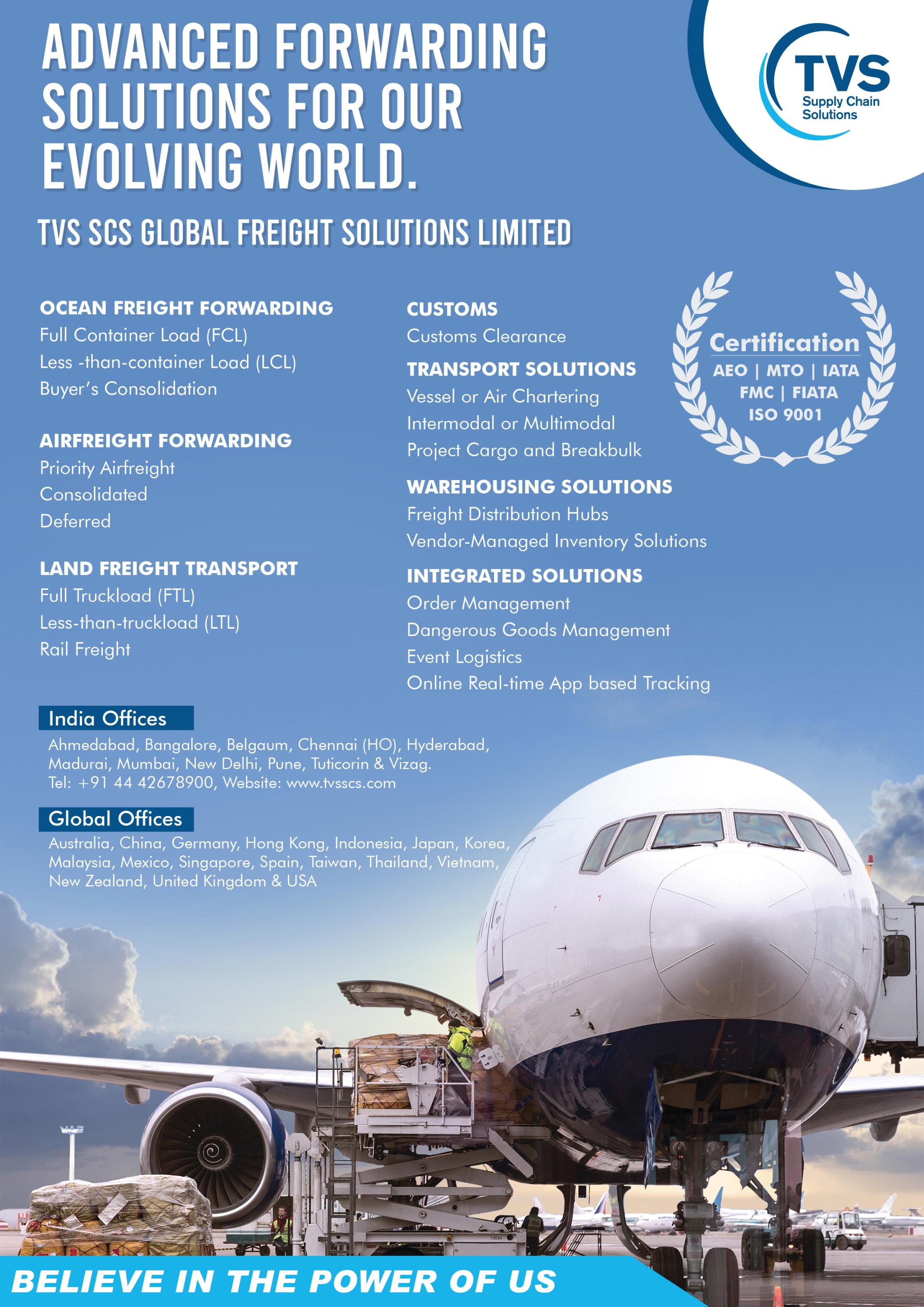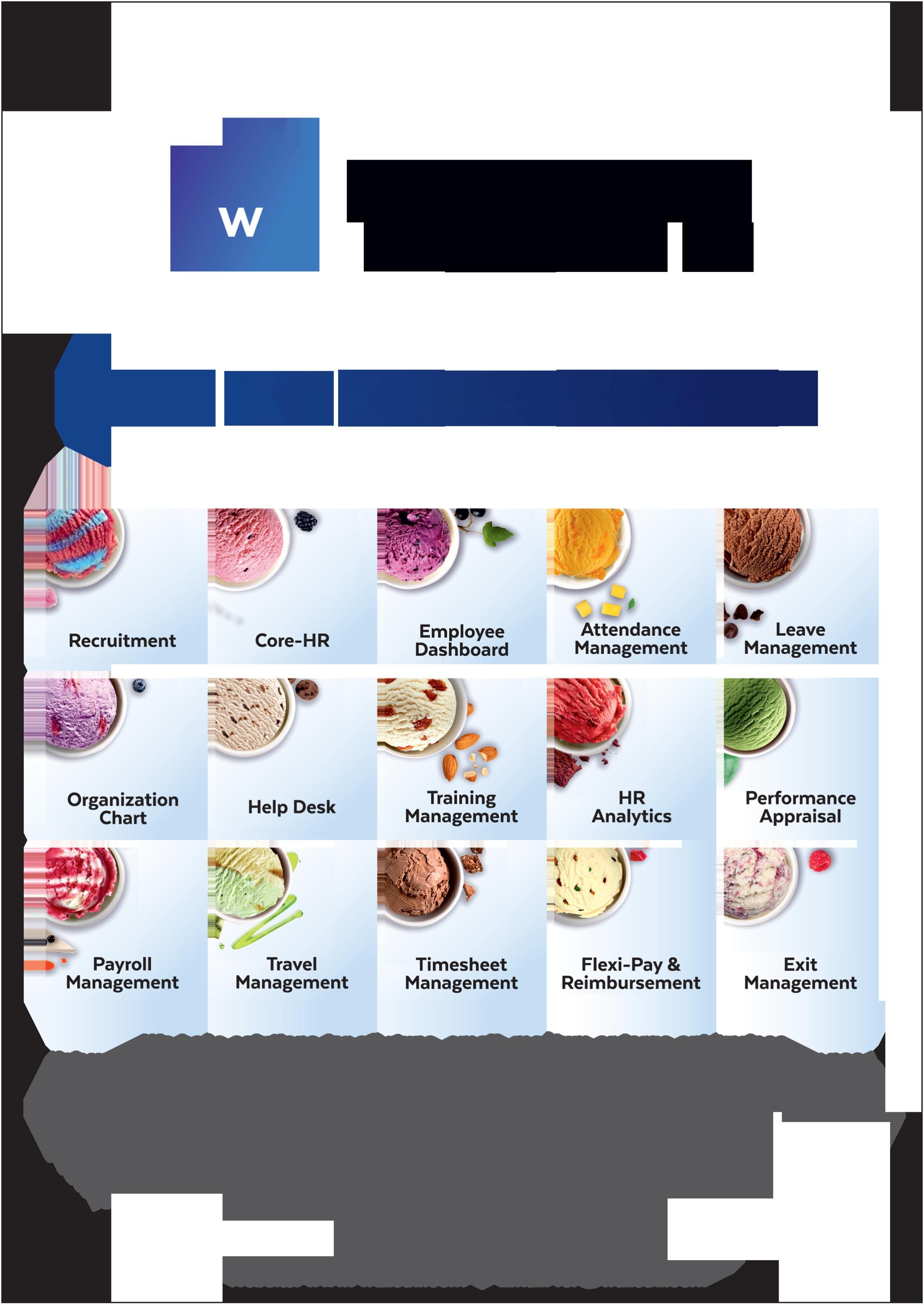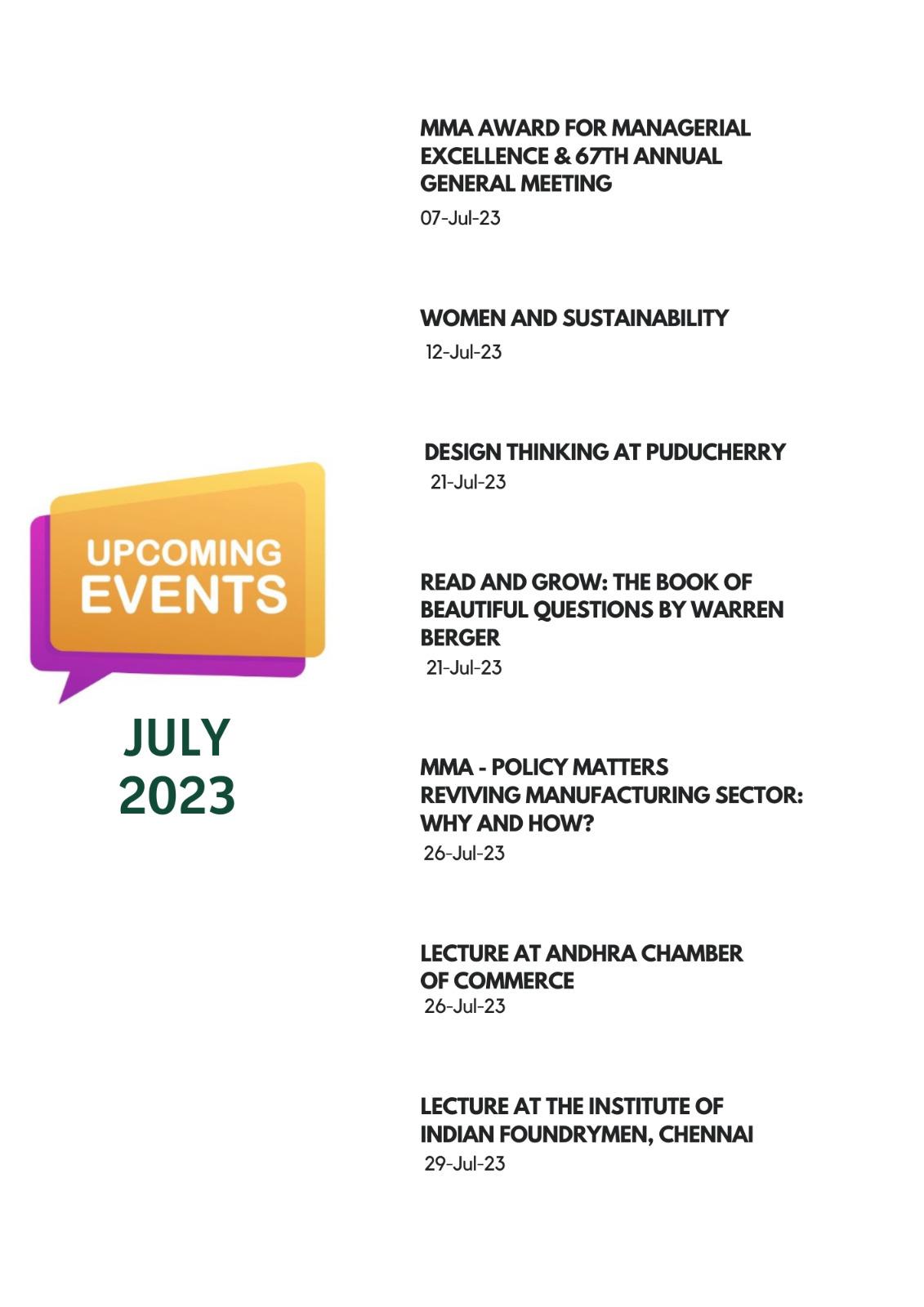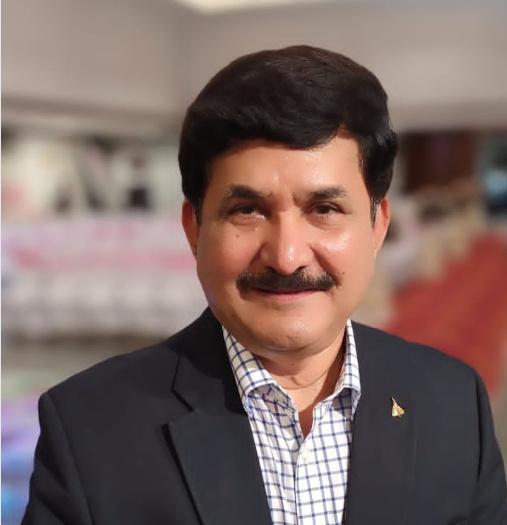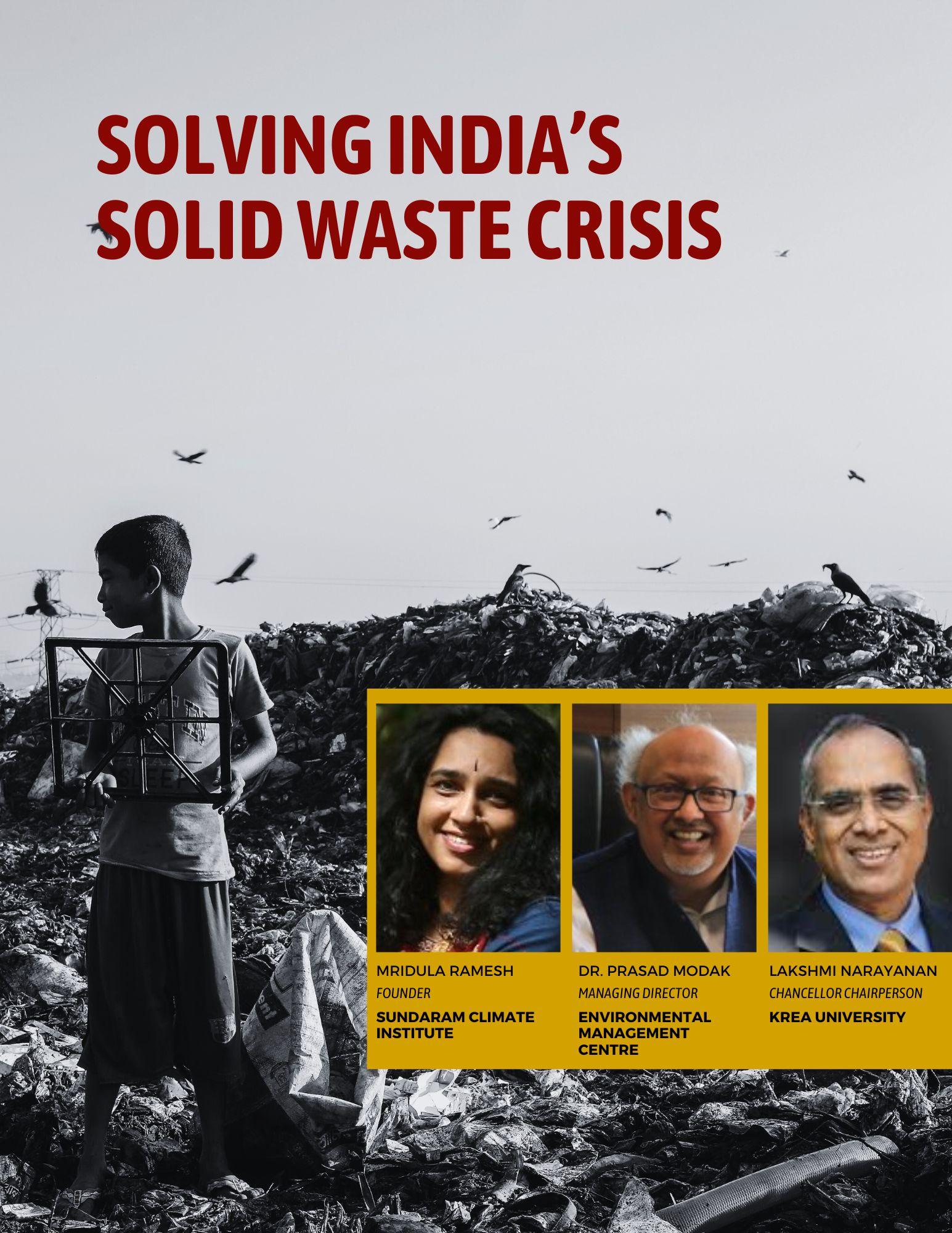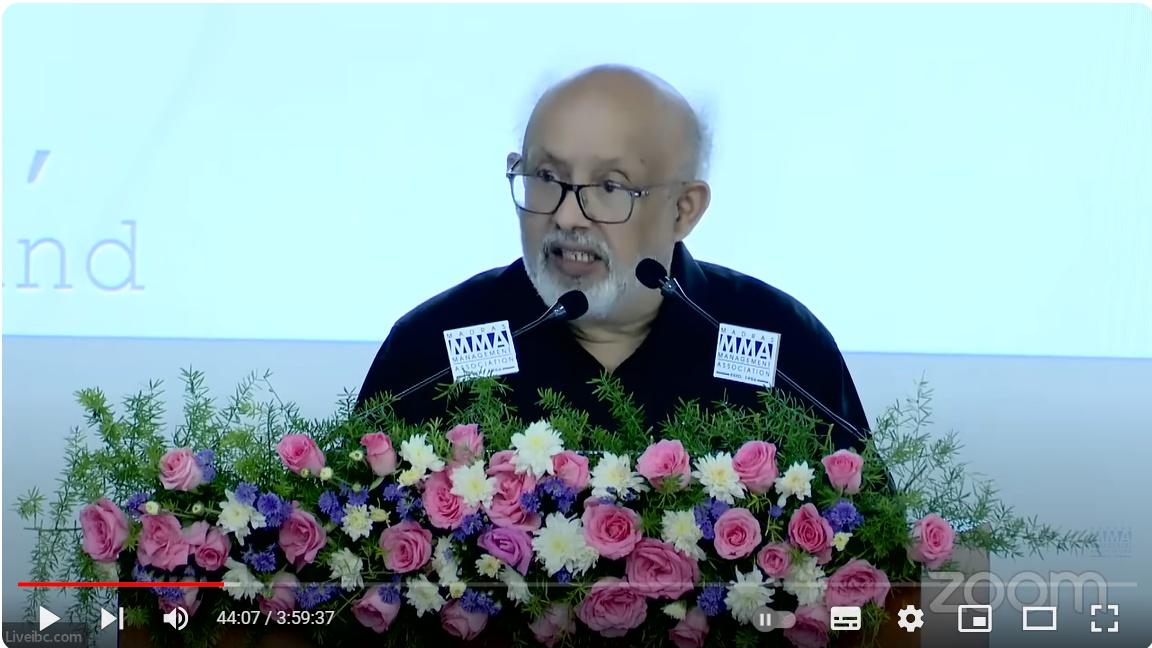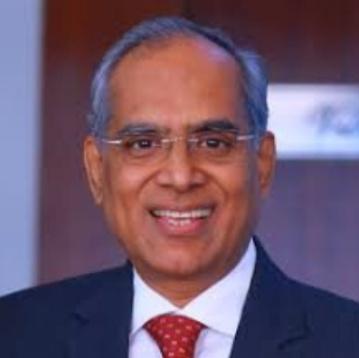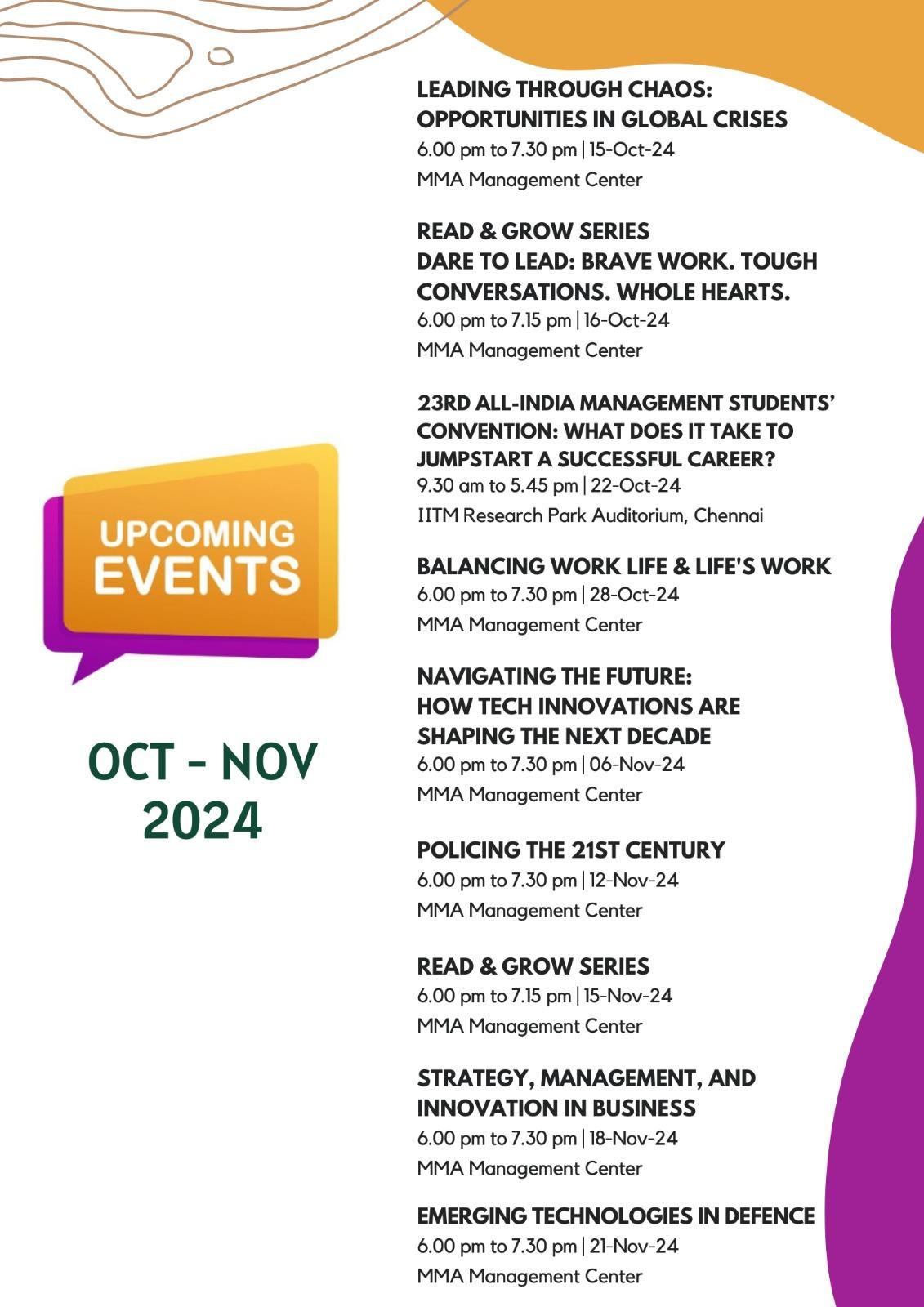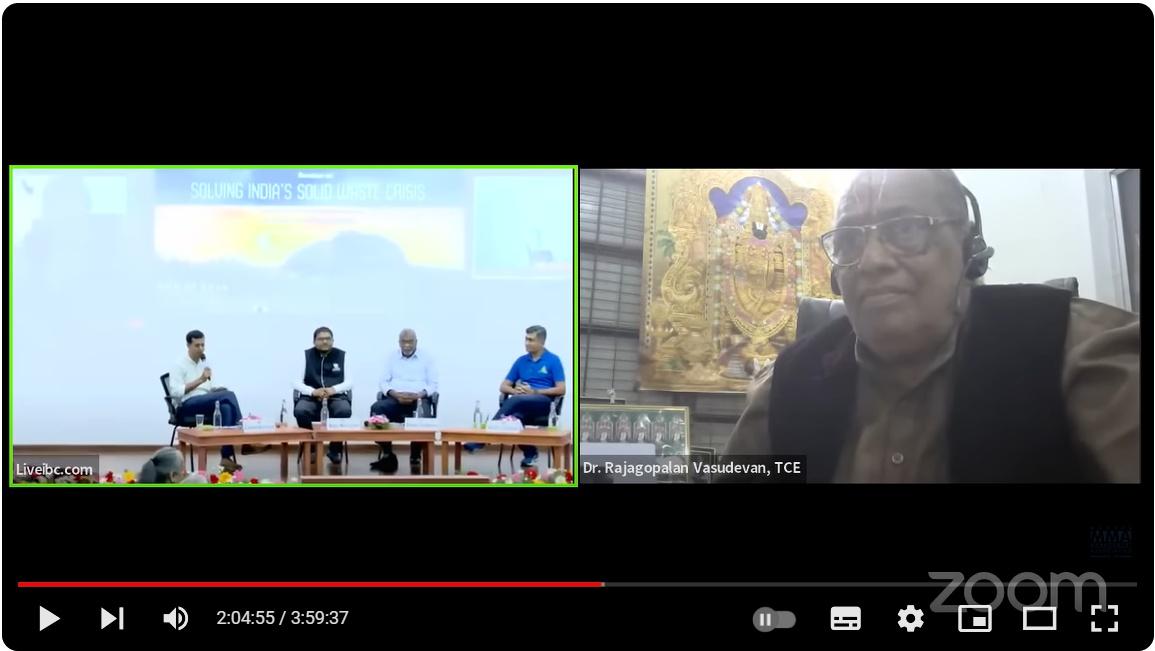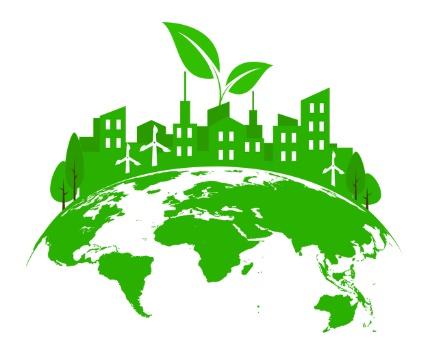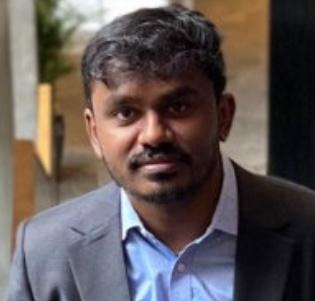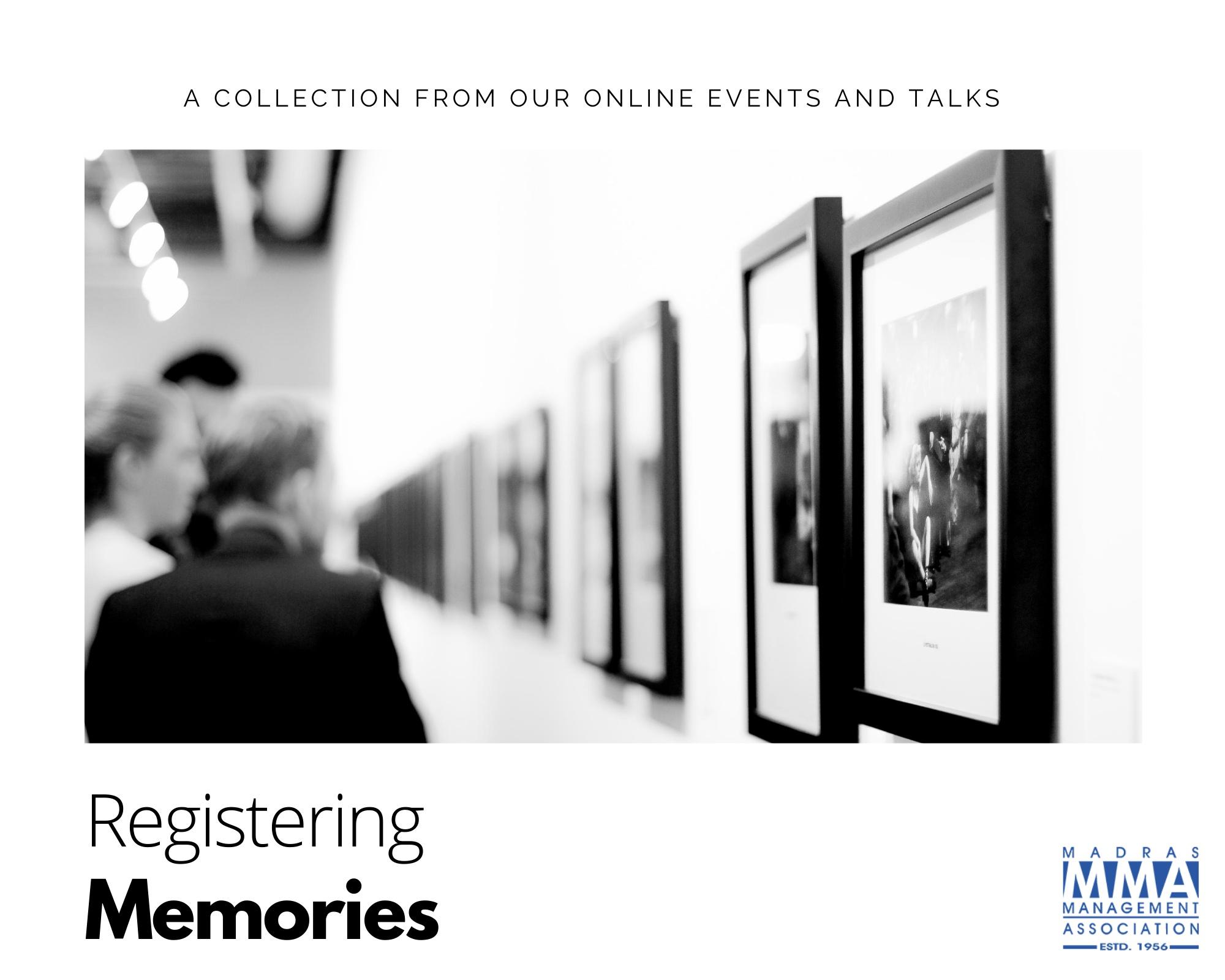It's Time to Learn & Move Forward
Wayanad provides critical lessons on the foreseeable disasters stemming from climate change, which is the most pressing issue humanity faces today. Human actions have intensified the impact of climate extremes, as seen in the recent landslides in Kerala that claimed 200 lives and the cloudbursts in the Himalayas, leading to widespread flooding and traffic chaos in New Delhi. These events are stark reminders of the repercussions of climate change, which is reaching a tipping point According to scientists, we have only a few years left to take decisive action before we reach the point of no return
Another area of serious concern is the ongoing solid waste crisis, characterized by burning landfills and clogged waterways. To address this issue, the Sundaram Climate Institute launched a ground-breaking
report titled "Solving India’s Solid Waste Crisis: Lessons from Madurai " This report is based on over 2,000 household interviews conducted from 2018 to 2023, along with expert insights. A key finding emphasizes the lack of awareness regarding the importance of solid waste management and highlights innovative start-ups that are helping India progress toward a circular economy. We hope these initiatives will accelerate India's journey toward a zero-waste future
MMA organized a seminar on “Solving India’s Solid Waste Crisis,” on August 17, 2024 at MMA Management Center featuring a distinguished line-up of speakers who shared valuable insights on this urgent issue I am pleased to present three outstanding articles in this issue for your reading. Additionally, we had an event focussing on “Peace-Time Challenges: The Army’s Wayanad Experience,” addressed by Lt. Gen. Brar,
Gp Capt R Vijayakumar (Retd), VSM
Confidence is crucial for success, and our goal is to help students build the trust they need to navigate their personal and professional journeys. This convention will emphasize the importance of self‐belief in tackling challenges, embracing innovation, and taking calculated risks.
which underscores the vital role of the Indian Armed Forces.
CavinKare – MMA Chinnikrishnan Innovation Award 2024
The CavinKare – MMA Chinnikrishnan Innovation Award 2024 celebrates the legacy of Mr. Chinnikrishnan, the pioneer of the "Sachet Revolution," who believed that the benefits enjoyed by the affluent should also be accessible to the common man. In his honour, this award recognizes outstanding innovation in India, and this year, the response to the award has been remarkable, with over 320 nominations from innovators across the country.
MMA coordinated with various organizations, including Atal Innovation Mission and Startup India among others to enhance the outreach. The social media initiative collectively generated approximately 380,000 impressions, resulting in a diverse array of nominations from different regions of India
The grand award ceremony was held on September 14, 2024, at the IIT Madras Research Park Auditorium, where three exceptional innovators were honored with the CavinKare – MMA Chinnikrishnan Awards for 2024 These awardees are now celebrated as shining jewels in the crown of the Chinnikrishnan Innovation Award. In today's world, there is a pressing need to prioritize innovation to make products and services accessible to
all, and we encourage everyone to join us in this mission.
Ms. Prabha Narasimhan, Managing Director & CEO of Colgate-Palmolive India Ltd , was the Chief Guest at the Awards function Her thought-provoking address on innovation inspired and ignited the minds of all attendees.
A highlight of the event was the launch of the book “Chinnikrishnan: Father of the Sachet Revolution,” published in multiple languages. The CKR family generously presented a copy of the book to all participants, ensuring it serves as a source of inspiration for many
MMA Management Students Convention 2024
The MMA Management Students Convention 2024 is an exceptional platform that showcases the untapped potential of management students. This event offers a unique opportunity for students to engage with industry experts and learn from thought leaders, while also providing institutions a chance to benchmark themselves against the best in the field.
This year’s the convention on the theme: “What Does it Take to Jumpstart a Successful Career?”
Scheduled to be held on Tuesday, October 22, 2024, at the IIT Research Park Auditorium. The event aims to inspire and equip students with the knowledge, skills,
Stress
and extended working hours have become the norm in professional life, and it’s crucial that we establish guidelines to help professionals set boundaries at work.
and mindset needed to thrive in an ever-evolving digital landscape. Confidence is crucial for success, and our goal is to help students build the trust they need to navigate their personal and professional journeys This convention will emphasize the importance of self-belief in tackling challenges, embracing innovation, and taking calculated risks We are delighted to share that a galaxy of eminent speakers has already confirmed their participation. With over 1,000 students registered to attend in person and an expected online audience of over 25,000, the convention this year promises to be a transformative experience. The convention will be telecast live on 22 Oct 2024 from 09.30 am to 05.45 pm You can watch the convention, live and get inspired You can also share this information with your colleague and students to watch it live and get ready to meet the future challenges.
Investing in Skills: Turning Demographic Dividends into Opportunities
India stands at a pivotal crossroads as a talent nation, but this advantage faces potential threats With the rise of Generative Artificial Intelligence, many jobs, particularly those involving repetitive tasks, are at risk. The urgency for not just skill development but rapid upskilling has never been greater A notable example is a Global Capability Center of a major US bank that employs over 10,000 people in India. They are now questioning the necessity of this workforce, given that
advanced AI models can replicate many tasks previously performed by humans. In this new landscape, survival hinges on our ability to constantly upskill and adapt, as cycles of learning and relearning will accelerate dramatically. In light of these challenges, the MMA organized a seminar on the theme “Demographic Dividend: Bane or Boon” on August 19, 2024, at the MMA Management Center. The speakers shared their insights on the demographic dividend, highlighting both its potential benefits and pitfalls They cautioned that traditional rote learning could hinder Indian talent in this rapidly evolving context. In today’s formal education system, knowledge acquired in the first year of university may become outdated by the final year
In this issue, I am pleased to present an article based on the transcript of the seminar for your reading. You can also watch the seminar video to gain deeper insights into how we can harness our demographic dividend for a brighter future
Let’s embrace the challenge of upskilling and transform our demographic dividend into a powerful opportunity for growth and innovation!
Work‐Life Harmony: Moving Beyond the Glory of Overwork
Tragically, a young professional in her first job lost her life allegedly due to overwork This heart-breaking incident is part of a disturbing trend: over the last year,
approximately 200,000 Indians have died as a result of work-related stress and long hours A McKinsey report highlighted that nearly 60% of respondents in India reported symptoms of burnout, the highest rates globally Alarmingly, India leads the world in workrelated health complications, with our numbers surpassing even those of China. Stress and extended working hours have become the norm in professional life, and it’s crucial that we establish guidelines to help professionals set boundaries at work.
In response to these pressing concerns, MMA is organizing a presentation on the theme “Balancing Work Life & Life’s Work” on October 28, 2024 The elite speakers will share their insights on this vital issue You can watch the presentation live or join us in person at MMA. Let’s work together to foster a culture that values work-life harmony and prioritizes well-being over the glorification of overwork.
Checkmate! The Rise of India as a Chess Power
India is stamping its authority on the global chess stage. The recent victory in Hungary has been hailed as a pivotal moment for chess in India. For many years, this sport relied almost exclusively on the genius of Viswanathan Anand for its prominence, but 2024 marks a significant turning point. With the foundation laid by Anand, India’s next generation of chess players is charting new paths to command the game like never before Their innovative strategies and relentless dedication are propelling India into a new era of chess excellence. Congratulations to the kings and queens of Indian chess! Your achievements inspire a nation and herald a bright future for this beautiful game.
Invest Smart and Worry Less
The casino-like atmosphere surrounding India’s IPO frenzy could foster instability and harm investors. It is
crucial that our financial movements are driven by economic fundamentals, rather than speculative excitement. An IPO oversubscription of 100 times should not be mistaken for a ringing endorsement of a company’s fundamentals
Investors need to evaluate stocks based on their intrinsic value and financial health. Unfortunately, many are currently fixated on short-term gains from listing day, which is not a sustainable approach It’s essential to resist the fear of missing out and focus instead on making informed investment decisions.
By investing smartly and prioritizing long-term stability over fleeting excitement, we can navigate this volatile landscape with greater confidence and peace of mind. Let’s cultivate a culture of informed investing that promotes sustainable growth for all.
I am also delighted to present more intriguing articles in this issue for your reading pleasure and inspiration.
We urge you to constantly send in your feedback positive ones as well as criticisms, both equally important inputs in enabling us to get better at what we do.
As always, we would be happy to hear your views, comments and suggestions
Happy reading!
Managing waste is one of the most impactful steps we can take
Mridula Ramesh Founder Sundaram Climate Institute
What I’d like to share is what I have learned over the past ten years The first point is that waste can be thought of as your shadow; just as you can’t separate your shadow from your body, you can’t separate waste from the way we live. One key observation is that we are incredibly wasteful. Every day, humans generate the equivalent of about 1 3 million elephants in waste Imagine 1 3 million elephants heading towards a landfill, being burned, or flowing into the nearest stream. This gives
The Swachh Bharat campaign has made tremendous strides but India's solid waste crisis persists with burning landfills and choked streams To address this, Sundaram Climate Institute launched a ground‐breaking report, "Solving India’s Solid Waste Crisis: Lessons from Madu‐rai," based on over 2000 household interviews and expert insights
you an idea of the scale of waste we generate In India, the commonly cited figure is around 150,000 tons of waste per day. This number is highly uncertain, as we weigh waste in our homes, but I doubt many people do the same Studies suggest the actual number could be twice this amount.
A significant portion of this waste is incinerated, and that’s crucial to remember Look around you there's plastic everywhere, and it’s not disappearing anytime soon. What shocked me is that if we take the total amount of plastic produced since 1950 and convert it into elephants, they could circle the sun not just the Earth twice Much of this plastic has ended up in our streams and oceans, or has been burned. India generates about 20,000 small cars' worth of plastic waste every day The waste itself isn’t the main issue; even before the advent of plastic, we generated waste. In the past, we would compost and reuse it in our fields. The real problem is that 40% of waste is unmanaged Developed countries often send their recyclable
materials to developing countries like ours for processing
Managing waste is costly $252 billion globally. It’s easy to blame the government, but municipalities in India often lack funding compared to their counterparts elsewhere, resulting in inadequate infrastructure for waste management. Consequently, waste ends up in oceans and landfills, with landfills across India bursting into flames every summer
Startling Revelations from the Madurai Study
Over the past six years, our team has spoken to 2,389 people in the byelanes of Madurai, who shared their experiences regarding waste and water. Their stories form the basis of our findings and report.
The municipal corporation collects waste from many households, but ‘most’ is a troubling word When waste isn’t collected, people often resort to burning it. Why do people burn their waste repeatedly? At some
In India, 2.18 million people die prematurely due to air pollution, often blaming vehicles.
level, there’s a belief that fire will purify everything.
In our survey, we asked, “Does waste bother you?” Surprisingly, a third of respondents said, “No.” This was a significant revelation for us While education has some influence, even people with no formal education often felt that waste didn’t bother them. This attitude was consistent across different years, income groups, genders, and neighbourhoods Many felt, “My house is clean. Why should I care?”
In India, 2.18 million people die prematurely due to air pollution, often blaming vehicles However, burning waste is a major source of particulate matter
For effective climate action, managing waste is one of the most impactful steps we can take, both for mitigation by reducing carbon emissions and for adaptation.
pollution. When we asked if waste burning bothered them, many had no comment, and 11% deemed it a necessity, believing that if no one collects it, burning it helps reduce mosquito populations. The chemicals released from burning waste are the same as those released during the Vietnam War; the U S government deemed them so dangerous that they transported them to a remote island near Hawaii. Yet today, we release these chemicals in every corner of India as we burn waste Once created, these chemicals persist for years, accumulating in our bodies.
Waste and GHG Emissions
Currently, the focus of climate action is on solar panels, renewable energy, and electric vehicles. However, managing solid waste is a vital way to reduce greenhouse gas emissions A study by WRI found that 11% of greenhouse gas emissions in Bengaluru come from solid waste, making it a significant issue perhaps even more critical than electric vehicles. Chennai is no stranger to flooding, which is worsened by solid waste blocking drainage channels. Effective waste management could reduce the prevalence of diseases like dengue and other epidemics
Of those who claimed that waste didn’t bother them, 60% had experienced issues caused by solid waste, yet they failed to make the connection. It’s a
classic case of ‘out of sight, out of mind ’ Many people think, “My house is clean; the waste is gone,” but that’s misleading. Fortunately, there are startups and NGOs working on solutions. We can effectively manage waste at every step, from collection to separating wet and dry waste to processing cooking oil
I come from the textile industry. From 100 kilos of cotton, we obtain 71 kilos of yarn, leaving 29 kilos as waste We reuse and sell that waste, which is where our profit comes from jeans and various textile products are made from it. If collected properly, this waste can be utilised effectively.
When we asked people about their role in managing solid waste, 50% said they didn’t know Most claimed to understand segregation, but only 20% of those who claimed to know received training on why segregation is important When we asked, “What is your role in waste management?” only 20 out of 2,389 respondents 1% identified segregation as their responsibility. If we fail to segregate, many potential solutions disappear, leaving us with landfills and burning
Most waste is either dumped or burned, and any recycling that occurs often relies on waste pickers. My main point is that waste needs to be recognised as a pressing issue For effective climate action, managing waste is one of the most impactful steps we can take, both for mitigation by reducing carbon emissions and for adaptation If we stop burning waste and manage it properly, we could create one to two million new jobs across the country. This is significant! We can develop more sustainable cities, reduce stress on agriculture, and lessen flooding If there’s one action you can take for your health, the health of the planet, and a more equitable society, please manage your waste, invest in its management, and recognise your role in the process
Viewing the waste economy as smart, sustainable material management
Dr Prasad Modak Managing Director Environmental Management Centre
Pvt. Ltd.,
It’s interesting to consider the relationship between waste and economy I feel somewhat qualified to speak on this topic for a couple of reasons. First, I was engaged several years ago to prepare what is known as a Global Waste Management Outlook, which allowed me to observe waste management practices around the world. I later contributed to the Asia Waste Management Outlook. Both studies were commissioned by the International Solid Waste Association (ISWA) and the United Nations Environment Programme's International Environmental Technology Centre (IETC) in Osaka. Additionally, I published a book on the circular economy, further exploring global practices in this area
The first thing we must understand is that waste is created by humans, not by nature. This distinction is crucial for understanding the dynamics of waste. Dry waste, in particular, reflects our consumptive lifestyles To manage waste effectively, we need to adopt a life cycle perspective. We should prioritize refusing, reducing, reusing, and recycling throughout our production, distribution, and consumption processes
Defining Circular Economy
There are over 200 definitions of the circular economy For instance, the European Union provides one definition, while the Ellen MacArthur Foundation
offers a think tank perspective Additionally, there is a legal definition from China, where circularity is embedded in law. Simply put, circularity can be represented in four concentric circles:
1. The innermost circle focuses on reducing the consumption of virgin resources through refusing, reducing, and reusing.
2. The next circle emphasizes extending product life through repair, refurbishment, and renovation
3 The third circle involves adding value by leveraging technology and creating green jobs.
4. The outermost circle represents transformative innovation, where a complete rethinking of practices occurs
It’s important to note that the term ‘circular economy’ is often mixed with ‘recycling’ at the project level Circularity is not synonymous with recycling Innovation should aim to address challenges that seem insurmountable. Recycling often becomes the focal point for innovation in the waste economy. However, is it always a good idea?
For example, I’ve seen many entrepreneurs creating toys from recycled plastic. We must remember that this plastic may contain flame retardants, which can leach into these toys The economic feasibility of removing these harmful substances makes such recycling problematic. Moreover, the materials often used in construction while debated may not be sustainable solutions in the long run Responsible recycling is essential, and we need clear recycling standards. We have repeatedly emphasised to the government of India the necessity for these standards, but progress has been slow Other countries, such as Thailand, have made
segregate correctly, advocating for the use of AI and robotics to automate this process
Studies have shown that people living in neighbourhoods with extensive littering and waste mismanagement often experience a decline in moral values.
significant advancements in establishing recycling standards.
Using AI: The US Way
Can we think differently? We should design products to be easier to repair, disassemble, and recycle. This upstream approach is where I see a need for innovation, which is currently lacking There’s an ongoing debate about whether we should segregate wet and dry waste. Some argue that people will never
For example, seven major cities in the United States have moved away from manual segregation, relying instead on robotics that achieve 99% accuracy in separating waste without the need for multiple bins This approach could reduce greenhouse gas emissions. I’m not claiming this is the definitive answer, but it’s a conversation worth exploring
Logistics play a vital role in waste management It’s best handled at the decentralised level, not only for cost-effectiveness but also to engage communities. When examining recycling economics, factors like collection, sorting, transportation, cleaning, conversion, and market identification all come into play. Applying critical thought to each step reveals that recycling economics can be quite complex
We often use the term ‘geek littering,’ which I define as the art of responsible discarding, distinct from littering. For instance, when we recycle textiles, we
reclaim fibres for reprocessing Responsible behaviour in waste management matters significantly; the choices we make about discarding waste can lead to upcycling.
There's a profound concept known as the psychology of pollution. Studies have shown that people living in neighbourhoods with extensive littering and waste mismanagement often experience a decline in moral values. Research on this topic has been piloted on a large scale in Delhi, revealing that proximity to dump sites can erode morality
Optimal Recycling
A common question arises: is there a socially optimal recycling rate? Research by a group of Japanese
scholars suggests that exceeding a recycling rate of 10% to 12% may not be beneficial While this figure isn’t definitive, the inquiry itself is essential. In India, recycling rates are not officially published, but global comparisons reveal dismal statistics Some countries have achieved high recycling rates, and we need similar studies in India to understand our own rates better.
Much of the recycling in India is handled by the informal sector, making it difficult to gather accurate data. Nevertheless, we must question and assess our recycling practices, especially as the Asia-Pacific waste recycling market is booming However, we must also ensure that health and safety standards are upheld for informal workers in this expanding market.
Therefore, we need to consume less, extend product lifecycles, and prioritise repair and refurbishment Investments in startups focussed on these areas are crucial. In states like Bihar and West Bengal, there’s a booming market for mobile phone repair and product longevity This is a promising entrepreneurial opportunity, but we still need more players in this space.
We must expand the definition of recycling to include remanufacturing, which is critical for fostering innovation. Remanufacturing is not yet formally established in India. There are successful examples in the European Union and the United States, and despite my efforts with NITI Aayog over the past five years, we have yet to establish a remanufacturing council in India. This could be a fountain of innovation and a significant investment opportunity The concept of remanufacturing aligns closely with the lifecycle flow of materials, enabling us to reintegrate waste products into second, third, and even fourth life cycles We strongly advocate for the establishment of an Indian Remanufacturing Council, which could address many issues we’ve discussed, while also presenting significant opportunities for job creation and skills development
In conclusion, I want to reiterate four important principles often associated with the circular economy as a framework for material management:
1 Keep materials in use for as long as possible
2 Encourage cascading material flows between sectors.
3. Focus on preventing contamination of materials from the outset.
4 Phase out harmful chemicals
We have recommended to the Ministry of Chemicals
and Fertilisers the phasing out of ten specific chemicals
We must adopt a comprehensive approach, viewing the waste economy as smart and sustainable material management.
Ultimately, this should lead to a truly inclusive circular economy It is not merely about technology, innovation, finance, policies, and laws; it should be a movement driven by people. Such transformation must be a collective responsibility, emphasising the need to enhance sustainability literacy Everyone must understand that it is our shared duty to foster a more sustainable future.
Need for production limits, pricing, and usage strategies for plastics
Lakshmi Narayanan Chancellor Chairperson KREA University
The issue of waste management is not new; it has been a persistent challenge for many years Thoughtful solutions around reuse, recycling, and repurposing have been proposed, but the real challenge lies in implementing these solutions at scale in a country as large as ours
Take Indore, for instance With its 78 wards, waste segregation there is nearly 100%, and door-to-door collection is fully achieved. Indore has consistently been rated the cleanest city in India a remarkable example But why is there only one Indore in the country?
Studies clearly link plastic production to climate change, highlighting its impact at every stage production, usage, and recycling.
Let’s consider Kumbakonam in Tamil Nadu This city has tackled plastic waste management effectively, collaborating with the municipal corporation and local industries. They successfully segregate plastic waste and supply it to the two major cement companies Dalmia Cement and Ultratech Cement. These companies process this clean, segregated plastic waste as fuel in their plants, thus saving costs and repurposing plastic responsibly Of course, there are transportation costs
and expenses associated with controlled incineration, but this example illustrates the potential for effective plastic waste management This model has already been implemented in 11 other locations, yet we rarely hear about them. It’s our responsibility to scale these successful initiatives by engaging all stakeholders
We cannot function in today’s world without plastics. While we can thoughtfully replace plastics in certain applications glass is a notable alternative plastic production will likely remain high due to its reliance on fossil fuels. As long as crude oil and other fossil fuels are used extensively, we will face challenges in managing plastic waste If consumption of fossil fuels decreases significantly, we might see a reduction in plastic production. However, if the prices of crude oil drop, it may become economically viable to continue producing plastics at current levels Policymakers must carefully consider production limits, pricing, and usage strategies for plastics.
There is a belief that transitioning to alternative energy sources will lead to a decrease in plastic production, but this remains unverified. Studies clearly link plastic production to climate change, highlighting its impact at every stage production, usage, and recycling
It’s been quantified that plastic production could account for nearly one-third of the global carbon budget, emitting four times more greenhouse gases than the airline industry Therefore, reducing plastic usage is crucial for environmental conservation and mitigating climate change.
One final point I’d like to emphasize is the need for power in effective waste management We require electricity for compacting waste and operating sewage treatment plants. In Chennai, for instance, many sewage treatment plants are non-functional due to intermittent
power supply As our per capita and industrial power requirements increase, nuclear energy presents a clean and safe solution. It is also one of my favourites. It is making a significant comeback and could play a vital role in addressing climate change
To summarise:
1. We must prioritise power generation using nonfossil fuels.
2 Reduce plastic production and seek alternatives
3 The hospitality industry is increasingly replacing PET bottles with glass, and the healthcare sector is actively looking to substitute plastic items while managing waste effectively
Finally, we as individuals must take responsibility for cleaning our environment.
Mridula Ramesh: Climate is something we all talk about, and it's gaining more and more importance. There is a gold rush for climate tech investing. Everybody is going into EVs. Why is waste not part of the story?
Anjali Bansal: Even five years ago, we didn't have many takers for climate as a commercial investment. Certainly, it was a focus in terms of energy security and fossil fuels, but there was still debate on, "Is global warming real?" We always go through these eras of cooling and heating in the Earth's history There were deniers even five years ago Today, at least, we don't have deniers. That change has happened because you feel it every day with record temperatures and completely erratic monsoons In the Global North, they worry about heating Here, we worry about cooling
In countries like ours, it is a matter of both life and livelihood. We have impacts on life and health, and we also have issues of livelihood Farmers can't grow their crops because of flooding There are hazards to health in certain occupations. So life and livelihood are impacted.
Anjali Bansal, Founding Partner of Avaana Climate and Sustainability Fund, talks about factors in building a sustainable ecosystem during a conversation with Mridula Ramesh, Founder of the Sundaram Climate Institute and Executive Director of Sundaram Textiles Ltd
Fifteen years ago, the first cycle of 'clean tech' happened Even solar was not commercially viable It required subsidies, and hence the first cycle of clean tech investing failed. With shifting cost curves, things have changed. Today, a new unit of renewable energy is cheaper than a new unit of thermal energy, so it makes business sense For any company or industry, it makes no sense today not to have renewables.
EVs also happened because we started seeing the actual cost benefits in the OPEX That, combined with government incentives, keeps the EVs running We are now talking about hybrid as a better intermediate solution. For waste, I think the time is coming. I can feel it I know you can feel it When the combination of a burning social need, a consumer need, and an economic need meets with technologies that are viable and commercially scalable, then changes happen
We need the intersection of four key stakeholders: society, technology and innovation, government and policy, and capital. There needs to be real demand from
society. Now we are trying to solve the problems of plastic and fossil fuels. But at one time, plastic was a miracle material Fossil fuels were a miracle when they were discovered and processed for use as fuel They fuelled the industrial revolution, took the average human lifespan from 45 to 85 and beyond, and created enough consumer surplus in the global economy to invest in healthcare, education, and a far better quality of life.
Plastic is not evil, nor are corporates evil. It's very easy to blame corporates because they use plastic wrappers. Are you likely to buy a biscuit that is not crisp because it was not wrapped in plastic or that might run the risk of contamination because it was not airtight? We must develop real alternatives We need to invest in innovation and technology for alternative materials that can replace plastic and yet be biodegradable Consumer demand will be a significant player
The other actor, therefore, is technology and
innovation to provide solutions. Corporate action goes hand-in-hand with consumer demand You need civil society, but you also need government and policy Fourth is capital. 100% of capital is required, but you need the full capital stack. It's not just equity or risk capital You need philanthropy, policy-based concessional capital, developmental capital, equity, and debt. That capital stack has yet to develop. I'm an eternal optimist. There's always progress happening. We are now getting traction on developing the full capital stack. For those who want to build in waste, do not look for VC. We need to work across our ecosystem. We may need to create working capital financing for waste, much like microfinance did 30 years ago
Why are some cities getting it right and others not? Indore or any of the top five cities in the Swachh Survekshan list are doing something special.
I grew up in Surat, Gujarat. Surat has the very dubious distinction of being the only urban center to have suffered from the bubonic plague in the modern
era Surat went from being the dirtiest to being the cleanest They had to redesign the city, and everything came together, much like it did in Indore. Indore didn't face as severe a crisis as Surat did. In Surat, a citizen’s movement, an enlightened bureaucracy, political support, and partnerships with civil society and local corporates worked together to make it happen. That’s why some cities are getting it right. Additionally, it was a manageable scale Chennai is almost the size of Israel and requires everyone to act together.
As an investor in this space, what are some of the things you look for?
We look at the size of the problem If it’s a big problem, it implies there will be a significant market for that solution. Not all problems are ready for equity investment. If there isn’t a large market opportunity, it’s probably not ready for equity investment, so we wait. We look for truly innovative, technology-led solutions. At our Avaana Climate Fund, we seek a model that is competitive and scalable There must be a business model on top of the technology Technology alone does not create the enterprise; the business model does. We also analyse the quality of the team, their passion, their right to play, and their right to win Do they bring something unique? Are there complementary skill sets? That’s what we look for.
We've seen some startups addressing the problem. What aspects of the waste or climate problem are you not seeing solutions for, and for which you wish startups would focus on?
Core science is one area. Universities or corporates must invest in alternative materials to eliminate plastic from the chain itself I dream of a world that is 100% renewable. Another dream is a world without plastic. Finding real solutions for the water problem is also high on my list Transitioning from an NGO model that
We have to think about a second life for EV batteries, and business models should evolve around that. We must look at recycling, reusing, and repurposing.
~ Anjali Bansal
works to a replicable and commercially scalable model is where we need to spend more time and effort
Real demand comes from policies such as those requiring companies like Unilever to start using recycled materials. We are not segregating the waste; there is an onus on us the public. I will share a personal story. When I started on this, I knew nothing about it. We began segregating waste in our house. By doing this consistently, we saved 45 tons from going into the landfill over the last eight years. Imagine, this is just from one house.
I call it a net-zero home, and it is absolutely phenomenal. It shows you can do it if you want, not just because of purpose and passion, but by making it convenient. For the most part, policy and regulation have played a fairly positive role, at least in India, where we are not divided on the issue of climate adaptation and resilience In the country, EPR (Extended Producer Responsibility) has created a market for plastic that didn't previously exist. I think it is time to create a market for e-waste as well We have to think about a second life for EV batteries, and business models should evolve around that. We must look at recycling, reusing, and repurposing.
We have an energy industry, an EV industry, a food industry, and large plastic and chemicals industry. Where is the waste industry? If there were a waste industry association, it could represent itself with both local and national governments and engage in awareness creation.
We should have people who do core research for which there is no application today but will be one tomorrow...
~ Anjali Bansal
Based on my experience with NITI Aayog, the government is also looking for solutions The government cannot be the creator of solutions. They will typically seek solutions from industry or civil society It will take time and process, culminating in either enabling positive regulation or negative regulation. It could be an incentive or a tax, like in the case of EPR, that helps in market creation. With NITI Aayog, there is a defined program on climate, and there is a senior person a program director for climate who is looking at India's Net Zero roadmap holistically across industries It's a great time to interface with them
What about medical waste? I haven’t seen a company managing medical waste except through incineration.
I haven’t looked into it, so I don’t know enough. What I do know is that next-generation materials being created and innovated might lead to less waste.
When you invest, what is the TRL level that you consider?
At Avaana, we invest in both product and process innovation. For deep tech, we look at TRL five plus, where there is proof in the lab and it is either already commercial or ready to be fully commercialised Now, there are more of us willing to take the risk. TRL three to five is where the gap lies. There’s some phenomenal work happening not only in India but around the world
on next-generation materials or alternative materials for everything, including packaging, plastics, and medical applications. If someone creates a product, I’m sure it will get funded, provided it is commercially replicable and scalable
What can be done to tap innovations lying hidden in many academic institutions?
At funds like Avaana, we work across the board, with incubators and universities in India and overseas, recognising that some of our solutions don’t need to be novel; they need to be applied and scalable. We should have people who do core research for which there is no application today but will be one tomorrow, leading to multiple commercial opportunities We have enough success stories in India. It is easy to say that the university system needs to do a better job and sure, it does but ultimately, if there is opportunity, there will be entrepreneurs.
Mridula Ramesh: There are people working on taking both MLP and single-use plastics back into the chain, converting them into polyol films, not just glass They are actually reintegrating them directly into the process itself, rather than downcycling.
To sum up, the time to act is now. Solid waste is a serious problem Until everyone perceives it as such, consumer demand won’t materialise. Policies may exist, but they may not be implemented. We need inclusivity. We must collaborate with cooperatives owned by waste workers or green workers There are ownership models where they can participate in the economic value creation of this sector, but it will require similar interventions to those seen in cooperative farming and microfinance Those models exist; we have to think about replicating and adapting them to this largely unorganized and informal space.

Ashwin Mahalingam: Everyone has heard of Adam Smith, who wrote the book The Wealth of Nations about 250 years ago It is, by no means, the first treatise ever written on economics; economics predates him by several centuries. For example, in India, we have Chanakya’s Arthashastra However, Adam Smith’s work marked the beginning of modern economic thought, particularly with his exploration of the concepts of supply and demand essentially, production and consumption
Over the last several centuries, society has become more efficient in both production and consumption, leading to improved GDP. Banks lower interest rates to incentivise consumption, which, in turn, stimulates production This creates a cycle of production and consumption.
As an engineer, I was taught the principle of mass balance, or the conservation of mass, which states that
What solutions are available for managing waste? This and a lot more questions were raised at the event. Here’s an excerpt from a panel discussion The panelists included Prof Ashwin Mahalingam, Faculty‐Dept of Civil Engineering, IIT‐Madras; Shekar Prabhakar, Managing Director, Hasiru Dala Innovations; Som Narayan, CEO, Carbon Masters; Sushil Vaishnav, Founder & CEO, KNP Arises Green Energy Pvt Ltd; and Dr R Vasudevan, Professor, Thiagarajar College of Engineering ﴾TCE﴿, Madurai
whatever is produced gets consumed but never truly disappears Unfortunately, the waste generated from production and consumption has become a major threat. Now, we are beginning to focus on reducing, recycling, and reusing materials. Some people are attempting to "valorise" waste, which means adding value to other processes through upcycling
Let’s hear from the panel members about what they are doing in their respective fields.
Shekar Prabhakar: ‘Hasiru Dala Innovations’ means ‘the green force’ in Kannada, a name chosen by the waste pickers we work with. We operate two organisations: one is a nonprofit that focusses on social justice for waste pickers, while I lead Hasiru Dala Innovations, which focusses on economic justice for them. We believe that social justice combined with economic justice provides waste pickers and informal waste workers the opportunity to aspire to significant
improvements in their quality of life, given the right opportunities. That is our mission. We refer to it as inclusive circularity, a term we have registered as a trademark
The Story of Lotfar
For example, Lotfar is a waste picker who became an entrepreneur with us seven years ago Previously, he had an unpredictable income, faced harassment from police and citizens, and lived in a tarpaulin shack. He joined our business model, which provides waste management services to bulk waste generators, such as apartment complexes and corporate campuses. Today, Lotfar lives in a permanent house, has a stable income, and has filed his income tax returns for the last six years. He has even started paying GST. He manages a material recycling facility (MRF) and employs 30 workers He also owns four trucks and a two-wheeler, having secured a bank loan to buy the scooter
What we aim to do is provide access to markets that waste pickers cannot reach on their own, access to clean waste from the source, and access to business models that offer either entrepreneurship or predictable livelihood opportunities. We have experimented extensively and now have three business models that are working well
Our vision is simple: a world with no waste and no waste pickers. Our mission is to make inclusive circularity a reality in the Global South Inclusive circularity involves the deliberate and planned inclusion of waste pickers and informal waste workers as integral parts of the evolving circular economy, recognised as green-collar professionals and entrepreneurs
Business Model
Our first business line is ‘building circular communities ’ In Bengaluru, there’s a regulation stating that bulk waste generators must manage their waste
Each entrepreneur generates about seven to nine jobs. Currently, we have 22 such entrepreneurs, who have collectively created around 250 jobs. We also have a user‐friendly mobile application for waste pickers.
~Shekar Prabhakar
independently or through empanelled private service providers like us, as the municipal corporation does not service them We provide these services for a monthly fee and hire a waste picker who becomes our entrepreneur. We buy them a truck, which they pay off over five years, creating an asset for themselves They handle primary waste collection, while we manage wet waste and rejects. The entrepreneur sorts the dry waste and sells it in the recycling supply chain, generating two income sources: a fixed income from us for collection and additional income from selling recyclables. We may be the only waste management company in the world that does not take revenue from dry waste
Each entrepreneur generates about seven to nine jobs. Currently, we have 22 such entrepreneurs, who have collectively created around 250 jobs. We also have a user-friendly mobile application for waste pickers In partnership with Carbon Masters, we established the first completely private organic waste-to-compressed biogas plant, which replaces LPG cylinders and produces organic manure in both liquid and solid forms, substituting for chemical fertilizers We are the only waste management company in India that manages the entire process, from collection to product creation
from organic waste This constitutes our second business model
Plastics Circularity
Our third model focuses on plastics circularity, which involves aggregating plastic waste We purchase plastic from our waste picker entrepreneurs and dry waste collection centres, then segregate it for recyclers. We stand out as the only multi-stream waste management company in the world that is fair trade guaranteed by the World Fair Trade Organization. For instance, we collaborated with brands like Unilever, which recently launched Sunsilk Oil Blends shampoo
For the first time ever, their bottles carry the words: ‘Hasiru Dala Innovations, a WFTO guaranteed Fair Trade enterprise, supplied the post-consumer plastic waste that went into this bottle ’ No company or brand has ever acknowledged a supplier on their packaging. This is what we refer to as circularity, where the waste we collect is reintegrated into a bottle
We are also working with brands to enhance design functionalities. Can we design out waste and incorporate recyclability and remanufacturability? H&M uses buttons made of recycled plastic sourced exclusively from us in their apparel manufactured in India; they call them ‘social buttons.’ We also pioneer event waste management services, assisting in hosting events such as weddings and the IPL We manage all four marathons in the country, as well as the Sunburn Music Festival and Echoes of Earth Music Festival. Last year, we managed around 400 events. The advantage is that waste pickers are hired for these events at abovemarket wages, allowing them to meet people they wouldn’t otherwise encounter and enjoy their work.We have waste pickers dressed in sarees we’ve provided, wearing makeup, and excitedly discussing their work at these events. Their participation supplements their
base income In all our models, we offer either entrepreneurial opportunities, livelihood positions with us (such as at the aggregation centre), or supplemental income opportunities.
Recognising that people need different solutions, we understand that not everyone can be an entrepreneur or work a traditional nine-to-five job. We provide various models to create impact. Anyone who joins our system has seen their household income increase by 122%
Som Narayan: I represent Carbon Masters and I am one of the co-founders. I’m an environmental engineer, and after my engineering, I went to Edinburgh to pursue a master’s degree in carbon management I was taken aback by the man-made climate crisis we all need to address, which motivated me to spend the next ten years working on solutions We initially started as a consulting firm focused on measuring, managing, and reducing carbon emissions, which is how we came to be called Carbon Masters.
As Bengaluru transitioned from the Garden City to what some call a ‘garbage city,’ I became increasingly interested in waste management. Ninety percent of methane emissions come from landfills, and since methane has a global warming potential 32 times greater than CO2, addressing climate change requires us to reduce methane emissions. Additionally, India's heavy dependence on fossil fuel imports and soil health are other critical factors to consider
Connecting the Dots
By connecting these dots, we realised we could tackle the issue through one solution: the circular economy. Today, we have around 60 employees and expect to achieve over 10 crores in revenue this year, with a target of 20 crores by executing projects and
Waste generation is inevitable, with each household producing at least one kilogram of waste daily. Our process involves collecting this waste, producing biogas and organic fertiliser, and distributing these products to our customers.
~Som Narayan
selling gas and fertilizer under our brand name, Carbonlites.
India has a rich history with biogas, boasting over 80 to 100 years of experience in the field Just as India introduced yoga to the world, it has also contributed to biogas technology. While Germany has about 10,000 biogas plants, India has only around 50 or 60 The government’s current mandate aims to establish 5,000 plants in the next three to four years, supported by various policy interventions. Companies like Hasiru Dala Innovations have created a vital supply chain in this ecosystem, enabling business models like ours to thrive
Waste generation is inevitable, with each household producing at least one kilogram of waste daily. Our process involves collecting this waste, producing biogas and organic fertiliser, and distributing these products to our customers. We have over 50 customers who have replaced LPG for cooking. Biogas can substitute for any fossil fuel; we even run trucks on it We operate eight trucks that cover more than 200 kilometres a day to collect feedstock and deliver gas to customers. Our endto-end process aims for carbon neutrality, generating no residual waste The 1,000 kilograms of wet waste that come to our facilities are either converted into
organic fertiliser or compressed biomethane gas, effectively replacing fossil fuels achieving complete circularity.
Three Divisions
We have three divisions First, we design and build facilities. Once constructed, we brand and sell both gas and fertilizers under the Carbonlites name. For feedstock, we partner with local waste management companies Our first secured region is Bengaluru, and we have also completed a project in Telangana, where we have a long-term partnership with the municipality extending up to 20 years We offer a complete and transparent solu 17 acres of land land. The city, w about 30 tons o with zero waste,
or gas The municipality benefits as well, generating a portion of EBITDA from their capital investment
In Bengaluru, we have formed a joint venture with Hasiru Dala Innovations. Typically, the government provides land and waste, but in this case, we collaborated to lease land for 20 years, built the plant, and now process 30 to 40 tons of household waste daily. Our two climate-friendly products are sold within a 30 to 40-kilometer radius of the plant, substituting LPG for restaurants and providing organic fertilisers to farmers within 10 kilometres.
The first time we attempted to set up the plant, we o community objections t waste processing in their ct real estate prices. We months, during which we mmunity This experience
taught us the importance of project location Now, we operate in an industrial area, functioning like an industry.
In Tamil Nadu, we have operations in Namakkal, where our assets are financed by local angel investors. Our twin products have strong applications in India We are currently involved in four projects and are adding two more. Our aim is to foster another 1,500 entrepreneurs like me in their local regions Our longterm vision is to create a franchise model that involves local people on the ground, as establishing effective supply chains requires local engagement. That’s our focus for the future
Sushil Vaishnav: We are trying to solve the problem of used cooking oil. Any fat is a dense form of energy, and we aim to create a solution that converts every type of fat into energy We are energy-hungry and need a lot of it Every problem has potential solutions, and we are working to create one from what’s left on your food plate.
Oil is essential for our bodies, and we use it when cooking However, in households, we typically don’t cook with oil for prolonged periods; it usually doesn’t extend beyond 15 to 20 minutes. Therefore, we try to reuse the oil Ideally, it can be used twice, but definitely no more than three times. Even top executive chefs often use it only once.
Fat consists of long chains. When oil is heated for too long, it breaks down into polar components that can negatively impact our arteries, leading to various diseases. Alarmingly, 60% of the oil currently disposed of goes back into the food chain Scrap vendors or street food sellers buy this oil and use it for dishes like pani puri. You can’t be sure what it was previously cooked with fish, mutton, or something else. Street
Collecting used oil in the supply chain is quite difficult. No logistics companies will handle it, regardless of what you pay them, because any contact with oil poses a risk of spillage and other consignments getting spoiled.
~Sushil
Vaishnav
vendors often continue cooking with it until it turns into a black, viscous substance Interestingly, the darker and more viscous the oil becomes, the more it enhances the taste.
Disposing of oil presents a significant challenge. You can’t pour it into water; a single litre of oil can pollute up to 20,000 litres of water, which is not a solution. You also can’t throw it into the soil, as it will damage the soil’s conditions We are working to convert used oil into sustainable aviation fuel Shell, one of the largest energy companies, holds 5% equity in our company and is supporting us. We’re starting with a small model
Collecting used oil in the supply chain is quite difficult. No logistics companies will handle it, regardless of what you pay them, because any contact with oil poses a risk of spillage and other consignments getting spoiled To address this, we have developed a mobile application for collection and treatment, similar to the Ola app. We’ve connected with 2,500 restaurants, and when they place a request, a vehicle comes to collect the oil. We also provide training to restaurants, households, and schools.
Our facility is a small plant, and we are an ISCCcertified company, ensuring traceability in everything we do. So far, we have prevented 15 million kg of CO2 emissions from entering the atmosphere by processing 6 million kg of used oil Additionally, we won the first Startup Challenge held in 2022
The Road from Plastics
Dr. Vasudevan: I’d like to start with the phrase "think differently " Plastic can be seen as a gift; it emerged at a time when the environment was heavily exploited. To help save the environment, plastic has become a wonderful substitute I believe it’s better to plan for its use than to impose a ban
My technology has been recognised in India, earning me several awards, including the Padma Shri. My work has been patented, and I was once offered $300 million for my technology, which I declined, choosing instead to give it freely to my country. Today, this technology is widely accepted and utilised, both in India and abroad
Now, let me pose a simple question regarding plastic: What does plastic represent? I say it is a ‘friend in need.’ It is used everywhere. It is a common man's ally and plays an essential role in our lives The issues surrounding plastic are not due to the material itself, but rather how we dispose of it. Disposal is where the problem lies Plastic is available in various forms used for storing food, medical supplies, and more
It’s important to remember that plastic is not biodegradable in the same way that organic materials are Some materials, like stones, gold, and diamonds, also do not decompose easily, yet they hold significant value. Similarly, while plastic does not break down quickly, it possesses remarkable properties, especially as a binder By recognising the potential of plastic as a
Collecting used oil in the supply chain is quite difficult. No logistics companies will handle it, regardless of what you pay them, because any contact with oil poses a risk of spillage and other consignments getting spoiled.
~Dr Vasudevan
binding agent, we can create numerous valuable products.
Plastic is a permanent necessity and a friend to the common man You’ll find plastic in every household, from packets to cups It provided essential protection to us during health crises like COVID-19. It is a key component in many structures, including cars.
The real problem arises from careless disposal Much of the waste found in oceans and other environments, like cigarette butts and food wrappers, is man-made. Urban areas contribute more significantly to waste than rural ones, where awareness and education about waste management are lacking. The challenge lies in changing this mindset and understanding that plastic is not the enemy; improper disposal is Instead of creating landfills, which aggravate the problem, we can manage waste properly. Organic material can be composted, and plastic can be repurposed With the right management strategies, landfills should be unnecessary
We must acknowledge that the pollution stemming from plastic waste is a result of human actions. Governments often struggle to enforce regulations
effectively, and there’s a lack of awareness among the educated population about solving these issues For example, during this year’s Independence Day celebrations, I noticed people discarding chocolate wrappers carelessly, reflecting a lack of awareness and responsibility
Plastic, in fact, is a versatile material that can be recycled. If we can properly collect and sort plastic waste, we can find valuable uses for it Thinner plastics can be repurposed for road construction and other applications.
We have developed a process to create roads using plastic waste By mixing plastic with stone, heating it, and coating the stone, we can produce durable roads with a lifespan of over 15 years, free from potholes and degradation. Since 2002, we have laid over 300,000 kilometres of roads in India using this method, demonstrating that plastic waste can significantly improve infrastructure.
We require vast amounts of plastic for road
construction one kilometre of single-lane road needs about one ton of plastic, which is equivalent to 10 lakh carry bags. With over 56 lakh kilometres of road in India, we need an immense amount of plastic waste to meet this demand
We can also create building materials, such as blocks for toilets, using plastic, which will be essential for the government's initiative to construct two crore toilets Furthermore, we are developing plastic boulders for ocean protection, which also require significant amounts of plastic.
The potential for utilising plastic is vast. The government has already allocated substantial funding for plastic roads, and our Prime Minister has assured support for this initiative. The applications of plastic are endless pathways, thermal insulation, water canals, and more can all be made from recycled plastic
Ultimately, the key is proper management and increased public awareness about plastic waste. We must encourage recycling, segregation, and responsible
disposal There is no waste in this world; it all depends on how we use it Remember, plastic is a creation that can be harnessed for the betterment of society. Let us embrace it positively and think about how we can utilise it effectively
Ashwin Mahalingam: All these are good initiatives India is a large country. What are the challenges that we face? How can we scale up such initiatives?
Shekar Prabhakar: One key issue we've faced is the lack of political will Eight years ago, when we started our company, we believed that Bangalore was progressive, especially with the implementation of the bulk generator rule In many cities, bulk generators contribute up to 40% of the total waste. If the bulk generator rule mandated that these entities manage their waste independently and cover the costs, it would have been a significant step forward Initially, I pitched to investors about expanding to multiple cities, assuming every city would adopt similar regulations.
However, successful scaling isn't just about having a scalable model or sufficient capital; it often depends on local municipal corporations and panchayats in enabling these changes. Real scale will only come when there is both political and citizen support For example, many people argue that source segregation isn't sustainable. Yet, we currently manage 300 apartment complexes that segregate their waste at the source. If they don't segregate, we won’t pick up mixed waste They categorise their waste into three streams, and these solutions are indeed scalable. If the bulk generator rule in Bangalore were fully implemented, we could be managing around 4,000 bulk generators today Instead, due to poor enforcement by local municipal corporations, contractors often just dump waste indiscriminately, preventing us from scaling effectively The framework for success is already in place laws
exist, we have a viable model, and the waste is available However, the enforcement is lacking
While biogas plants have become a priority for lending, we still haven’t received a loan from any bank. This highlights the need for proper frameworks and understanding In a startup environment, you can't wait three years to show profitable, audited statements before securing a loan. You need some initial capital for capital expenditures Venture capitalists typically prefer asset-light models, which complicates things further. These are some of the challenges we're currently facing.
Dr Vasudevan: Our technology has been recognized and appreciated, but the real challenge lies in implementation. Politicians, tend to prioritise shortterm projects, rather than investing in long-lasting solutions that could last 15 years We need to encourage conversations that help politicians make the right decisions because ultimately, these roads benefit us all, not just them. If we have good roads, we will all be happier
For road construction, plastic is a vital component We need to engage those who can help us collect the plastic required for road construction. Raising awareness among the public is critical for the collection process and ensuring that we complete the cycle of road laying. This aligns with the principles of a circular economy. If we can successfully implement this, India will thrive, and other countries will be eager to adopt this technology as well. We just need to bring our minds together to embrace this vision.
Ashwin Mahalingam: How can partnership help in scaling up?
Som Narayan: It’s a complex issue, and addressing waste management requires a long-term approach. If we consider the macro problem on a national scale,
India generates approximately 150,000 tons of wet waste daily, which need to be managed To effectively tackle this volume, we would require around 1,000 to 1,500 treatment plants, each costing between 50 to 60 crores This translates to a total investment of about 50,000 crores
While that sounds like a significant amount, it’s actually manageable within the budgets of municipal corporations For instance, Bengaluru spends about 1,000 crores annually on waste management, and to solve its waste issues, the total capital expenditure needed is under 1,500 crores. In just one and a half years, this investment could address the problem
Moreover, the fuel generated from these plants could be utilised for waste collection trucks. The issue isn't the lack of funds; it’s about organisation and collaboration We could initiate the first 100 plants through private investments and angel networks
Currently, in Bengaluru, we have an operational plant that receives around 100 visitors every two to three months This interest indicates a willingness to replicate our model elsewhere, which we encourage We have about a decade to solve this problem, but realistically, we need to act much faster. The urgency lies in scaling up our efforts and fostering entrepreneurship in different cities. These projects can be designed to become profitable within 24 months: one year to set up and another year to fully operationalise The process begins with a waste management company, followed by an operating company, and then we integrate the gas production.
Fortunately, the government is prepared to off-take the biogas or inject it into the grid, with a recent 5% blending mandate similar to what we’ve seen with ethanol. The government has accelerated its targets,
achieving what was originally set for 2030 ahead of schedule, and is now focussing on biogas as well To create a replicable model, we need a collaborative approach among multiple companies and effective source segregation Getting financing should be as easy as obtaining a car loan
Sushil Vaishnav: With the right incentives, the ethanol blending became more efficient. For example, sugarcane farmers used to receive payments in 90 days or even six months, but after the ethanol initiative, that timeframe was reduced to a maximum of 30 to 45 days. This shift attracted a lot of support.
Now, if we consider the waste management sector, the people involved in waste collection can also form a similar voter base for the government. If the government recognises this potential and develops incentives around it, we could see significant change
It's crucial to understand that change often requires consumer demand. Until consumers start asking for sustainable practices, it's challenging to drive systemic change This is where government incentives essentially, votes come into play Both consumers and the government need to recognise their roles in this ecosystem. Another important aspect is education. If we start focussing on sustainability in schools, we can foster awareness and behavioural change among children. By incorporating these topics into the curriculum, we can create a generation that prioritises environmental responsibility
Investment in these areas often requires a long-term view, as the ROI may not be immediate. Investors typically prioritise sectors where they can see quicker returns However, if we focus on these foundational changes, we can create a more sustainable future.
Governance standards vary widely across states.
Ramasundaram, IAS ﴾Retd﴿
At the time of independence, India's population was 350 million Today, it has quadrupled to 1.4 billion. This increase is not due to having more children; in fact, the average number of children per family has more than halved It used to be around six children per family, but that number has now dropped to three. In the southern states, the average has decreased from four to two. So why is the
There is a need for the Centre and states to begin drafting a holistic national/regional policy for addressing the issues and concerns of India's growing population and the various social, economic and political factors at play
population still growing? This is due to a demographic transition
In pre-modern societies, both birth and death rates were very high. As health facilities and nutrition improve, death rates fall rapidly, but birth rates take a bit longer to decrease This is more of a social phenomenon than just a health one. During this period of transition, the population grows. No country is an exception to this Western countries went through this transition about 100 years ago, and India is going through it now. Within India, states like Kerala and Tamil Nadu have almost reached the final stage of very little growth, while states like Uttar Pradesh (UP) and Bihar are still in transition This is why the population continues to grow. The good news is that death rates are falling everywhere.
Glaring Disparity
However, there is a concerning issue: economic disparity between states. According to government data, the per capita income of the five southern states is about four times that of UP, Bihar, and Jharkhand. These northern states also have lower levels of development Many factors contribute to this disparity, but better governance and higher literacy rates in the south are key reasons.
My wife, who is from UP, often says in a lighter vein, "You people have had a peaceful history We were invaded many times and constantly fighting We didn’t have the time to practice Bharatanatyam or Carnatic music like you did in Tamil Nadu." However, since independence, we can't blame outsiders for the lack of development it is due to our own administration and elected governments. Governance standards vary widely across states.
The answer is clear: these states need to prioritise education and create employment opportunities, which ultimately depend on good governance.
Not Religion, but Region Matters
How is the government going to address this disparity? Frankly, there are no easy answers. I am simply presenting the facts Some believe that Muslims are having more children and will eventually outnumber Hindus. This is not true. Even the Muslim fertility rate is declining, though it remains slightly higher than that of Hindus Other communities, such as Sikhs and Jains, have even lower fertility rates than Hindus, although their populations are smaller.
The percentage of Hindus in the population has decreased by about 5%, while the percentage of Muslims has increased by about 7%. However, the average Hindu family in UP, Bihar, or Jharkhand has more children than the average Muslim family in the south In these northern states, the average is around three children per family, while in the south, it is closer to two. Rather than religion, it is the region where you live that seems to determine family size, life expectancy, and professional outlook.
What an Irony!
A state like Bihar is about 80% rural, while the southern states are roughly 45% rural and 55% urban In predominantly rural areas, most people work in agriculture, and many men migrate to other states for construction work I remember when I was overseeing the construction of the Assembly Building in Tamil Nadu, 100% of the labour came from Hindi-speaking states I told the then Chief Minister, Mr Karunanidhi, that his dream building had been constructed not by Tamils, but by Hindi-speaking workers.
The next day, we hosted a bada khana (feast) in a pandal for the workers The CM addressed the workers in Tamil and perhaps for the first time, there was no applause for his speech. However, when an IAS officer translated his speech into Hindi, there was plenty of clapping The CM remarked, "What an irony!" But it was true
So what is the solution? The answer is clear: these states need to prioritise education and create employment opportunities, which ultimately depend on good governance In Tamil Nadu, we have had various types of governments, but we have never deviated from the overall direction of development. This is a credit to the political parties here
We need to grow at an annual rate of 8% to 8.5%
Dr M Suresh Babu Director
Madras Institute of Development Studies (MIDS)
Broadly, demographic transition consists of phases In phase one, both birth rates and death rates are very high In phase two, death rates begin to fall due to improvements in healthcare and living conditions, but birth rates remain high and do not decrease as quickly In phase three, both birth rates and death rates decline. Phases four and five depend on the steepness of the birth rate decline, with some variations in how sharply birth rates drop compared to death rates
Structural Transformation
In addition to demographic transition, there is also a phenomenon called structural transformation in an economy. Economies typically start with an agrarian structure, where agriculture is the dominant sector. As the economy develops, it moves into a phase of industrialisation In the third phase of economic development, the service sector becomes the largest contributor to the economy. This shift from an agrarian to a service-oriented economic structure is the process of structural transformation.
During this transformation, the percentage share of each sector in GDP changes. Initially, agriculture contributes the most to GDP, but as the economy evolves, services become the dominant sector. Along
We are currently experiencing demographic transition, economic structural change, and migration transition.
with these changes in GDP contribution, there are also shifts in employment distribution. At first, a large portion of the population works in agriculture. Over time, more people move into industrial jobs, and eventually, the majority work in the service sector
Migration Transition
Third, there is the concept of migration transition Initially, unskilled labourers tend to migrate in search of better opportunities. This migration is often maledominated, with men relocating for work while their families stay behind In some cases, the entire family may migrate together, but more commonly, the male migrates alone and may start a new family in the new location, while the family left behind remains in an unskilled labour context
The second phase of migration is semi-skilled migration, which, like the first phase, is predominantly male. However, in this phase, the family usually remains in the home location, and the migrant sends money
back Remittances contribute to the home economy rather than the host economy, where the migrant works The third phase of migration involves highly skilled individuals who often migrate with their families and prefer not to return In this case, the home economy does not benefit from remittances, which is a significant loss.
Vision 2047
As we look ahead to 2047, marking 100 years of independence, we have a vision for "Viksit Bharat" achieving the status of a developed economy Currently, the benchmark for a developed economy is a per capita income of $12,500. India's per capita income is currently $2,400. To reach this goal in the next 23 years, we need to grow at an annual rate of 8% to 8 5% and also use the power of compounding India has only achieved such growth rates during the period from 2003 to 2007, just before the global financial crisis, when we reached a 9% growth rate and, in one year, even touched 9.5%. This led to dreams of double-digit growth and overtaking China.
Perhaps the only time in global history when economies sustained such high growth rates for nearly a quarter of a century was during the "Asian Miracle," which saw rapid development in Southeast Asian
S g p
Invest in Children
To summarise, we are currently experiencing demographic transition, economic structural change, and migration transition I'm not suggesting that the demographic dividend is inherently good or bad, but we must invest in our children and youth to reap longterm returns. As fertility declines and families have fewer children, they can invest more in each child better schools, English education, advanced technology, and higher education.
o t, we ust act ow Ot e eco o es ave ssed this opportunity, but we have it now, and we must seize it while we can
To achieve this, we need forward-looking policies and a focus on health. COVID-19 was a major lesson for all of us. We must provide young people with the right opportunities to express themselves and fully realise their potential. The median age in India is currently 26, which is not bad. It was 28 earlier, and it is projected to reach 36 As the median age rises, productivity tends to decline, and we could become an ageing society, which has its own consequences.
However, as time passes, the share of the older population will rise, and the demographic dividend will gradually disappear There is only a limited window of it
One major challenge is the lack of comprehensive employment data Various agencies collect employment data, but it's fragmented Although the youth
population is large, youth unemployment especially among those aged 20 to 24 is also high Many are neither in education, employment, nor training. They are simply languishing, and this is a problem we must address
Quality and Quantity of Jobs
In our society, we have regular wage workers, casual labourers, and the self-employed For example, as a regular wage worker, I receive a salary, leave travel concessions (LTC), and other social security benefits. Casual labourers and the self-employed do not have access to these benefits We must closely examine the quality of jobs being generated in the economy. If youth are stuck in precarious jobs, it can lead to discontent, as we have seen in countries like Sri Lanka and Bangladesh
There is also a significant gender disparity in labour force participation. No country has achieved sustained GDP and per capita income growth without increasing women's participation in the workforce The gender gap in India is still large. If we get our policies right now, we can still reap the demographic dividend we haven't missed the bus yet So, what do we need to do?
1 Look East: We must look to countries like Singapore, Taiwan, and South Korea, which have successfully leveraged their demographic dividends through proactive policies that accelerated growth
2 Invest in Children: Currently, a child in India consumes around 60% of what an adult aged 20 to 64 consumes, compared to 85% in China. We need to spend more on children's nutrition and education Poor nutrition hampers their ability to learn, and the first 1,000 days of a child's life are crucial.
3. Focus on Education and Health: These areas are
fundamental to long-term development
4 Improve Reproductive Healthcare: Reproductive health services must be accessible and rights-based.
5. Promote Gender Equality: We must increase female workforce participation and create incentives for women to enter the workforce
6 Ensure Equitable Growth: India’s vast diversity requires policies that promote equitable growth across all regions.
7 Strengthen State-Level Governance: Much of the development action happens at the state level, and the central government can only do so much. We need to improve the institutional and governance capacity of states if we want to fully realise the benefits of our demographic dividend Government policies and schemes need to account for the diversity of our country.
Prof. D. Mahalingam Assistant Professor Bharathidasan Institute of Management
We economists are often seen as fence-sitters I won’t say that the demographic dividend is either a bane or a boon; instead, I’ll be cautiously optimistic We’re aware of the challenges when it comes to India’s demographic dividend I’ll touch upon a few strategies that we can look into to
Education quality is one area that we must focus on. There is no one‐size‐fits‐all solution. Government policies and schemes need to account for the diversity of our country.
overcome these challenges and tap into the opportunities
Let me share a few incidents I’ve come across I’m closely associated with the government of Tamil Nadu, working on a few projects, including a Planning Commission project During one of our visits to the Perambalur district, we interacted with officials from the Skill Development Department. They mentioned a labour shortage in semi-skilled areas. Particularly in ITIs (Industrial Training Institutes), the enrollment is low, while engineering colleges are full of students who struggle to find jobs after graduation.
The Mismatch
This points to a mismatch between the demand for jobs and the supply of qualified candidates. Speaking of employability, there’s a scheme by the Tamil Nadu government called Naan Mudhalvan This initiative aims to improve the employability of graduates in Tamil Nadu. During the initial meetings with bureaucrats and corporate representatives, the government questioned why not enough jobs were being created The response was that it’s not a lack of jobs, but a mismatch between the skills provided by the education system and the skills demanded by the job market For instance, AI and ML have many openings, but our education system, whether in schools or colleges, doesn’t equip students
with the skills to fill these roles
We focus too much on STEM Science, Technology, Engineering, and Mathematics while neglecting areas like Arts and Social Sciences, which also have tremendous opportunities. I come from an agricultural background, having studied both math and biology in my undergraduate degree. When I switched to economics, there was criticism from my family and friends, who questioned why I was moving into the arts But the reality is that there’s a lot of potential in those fields as well.
Learning Never Stops
Education quality is one area that we must focus on. There is no one-size-fits-all solution. Government policies and schemes need to account for the diversity of our country Upskilling should be gradual and continuous; learning never stops, even after joining an organisation. We need to instill this culture of continuous learning, especially in Gen Z, who often seek instant gratification We also need to acknowledge that the government cannot do everything alone. There are financial constraints, so society as a whole must take responsibility This is a collective effort
Finally, we must focus on innovation Many Gen Z individuals no longer want to be employees; they want to start their own businesses. The government has introduced numerous schemes to support startups, but there is still room for improvement
There are many strategies we can adopt to reap the demographic dividend. However, addressing the gaps in our education sector should be a priority We need to promote gender equality in the workforce While there is debate about recognising care work, we must ensure equal participation from women in the economy. That’s something we need to encourage and support
Sangeeta Shankaran Sumesh: This book on Mental Models authored by Peter Hollins features sharp, effective, and practical models. The author emphasises the importance of mental models, quoting Charlie Munger, who likens a world without them to ‘blindfolding yourself and randomly pointing to a spinning globe’ to find Cuba. We all use mental models, consciously or not The author has organised them into five main categories for easy understanding.
Decision Making Models
The first chapter is on Decision Making Mental model 1 is Eisenhower Matrix: We must classify tasks as important/urgent to prioritise effectively. Focus on what's important rather than just what's urgent Mental Model 2 is Visualize Your Dominoes: Consider the longterm consequences of decisions to avoid rash choices. Mental Model 3 is Reversible Decisions: Distinguish between reversible (e g , painting a bathroom) and
Under the “Read & Grow” series, MMA organised a discussion on the theme of the book Mental Models: 30 Thinking Tools that Separate the Average from Exceptional, authored by Peter Hollins Sangeeta Shankaran Sumesh, a Business & Leadership Coach, Speaker, Author, and Independent Director on Corporate Boards, anchored the discussions She was joined by Mohan Kumaresan, Executive Vice President of HR at Koantek Information Systems, and Rajan Bala Venkatesan, Chief Financial Officer of LatentView Analytics
irreversible decisions (eg: constructing a new bath room) to enhance decision-making speed. Model 4 is Seeking Satisfaction: Identify key criteria that satisfy your needs rather than striving for perfection Model 5 is 40-70
Principle: Aim for 70% certainty in decisions; anything less is mere guessing. Model 6 is Minimising Regret: Visualise your future self at 80 will you regret this decision? This helps in making thoughtful choices
Models for Thinking
Chapter 2 is about Clear Thinking. Mental model 7 is Ignore Black Swans: Recognise that unpredictable, high-impact events shouldn’t dictate your decisions, as they happen very rarely. Model 8 is Equilibrium Points: Understand diminishing returns more resources don’t always yield better results Model 9: Regression to the Mean: Be cautious of initial impressions; wait for patterns to emerge before making judgments. Model 10 is What Would Bayes Do? Use probabilities and real
events to predict outcomes effectively Model 11 is Think Like Darwin: Embrace detail-oriented thinking and challenge your own theories. Model 12 is System Two Thinking: Engage in analytical, slower thinking to improve decision quality
Problem Solving Models
Chapter 3 is about Problem Solving. Mental model 13 is Peer Review Perspectives: Seek external feedback to guard against biases. Model 14 is Find Your Flaws: Identify how your perspective could fail due to confirmation bias Model 15 is Separate Conclusion from Causation: Recognise the difference between correlation and causation. Model 16 is Storytelling in Reverse: Use tools like fishbone diagrams to identify root causes Model 17 is SCAMPER Method: It is an acronym and a creative approach to problem-solving using substitution, combination, adaptation, minimisation, repurposing, elimination, and reversal. Model 18 is First Principles Thinking: Break down
assumptions to solve problems from the ground up
Anti‐Mental Models
Chapter 4: Anti-Mental Models. Model 19 is Avoid Direct Goals: Focus on what to avoid rather than only what to pursue Model 20 is Think Like an Expert: Beware of overlooking small details that can impact outcomes. Model 21 is Avoid Your Non-Genius Zone: Concentrate on your strengths and avoid tasks that drain your energy. Model 22 is Avoid Your To-Do List: Focus on high-impact tasks and consider creating a "don’t do" list Model 23 is Avoid the Path of Least Resistance: Exercise self-discipline and ask if your actions align with your goals.
Oldies but Goldies
Chapter 5: Oldies but Goldies Model 24 is Murphy's Law: What may go wrong may go wrong. So plan for the worst-case scenario. Model 25 is Occam's Razor: Choose the simplest explanation Model 26 is Hanlon's Razor:
Assume positive intent in others to foster better relationships Model 27 is Pareto Principle (80/20): Focus on tasks that yield the most significant results. Focus on the 20% of the work that leads to 80% of the results Model 28 is Sturgeon’s Law: Recognise that 90% of everything is subpar; seek the quality within Model 29 is Parkinson’s Law: It states that work expands to fill available time; set strict deadlines to enhance productivity Model 30 is Combat Procrastination: Develop clear agendas and priorities to stay focussed.
While the book could have given more examples, it offers valuable and practical insights. The collection of mental models serves as useful tools for both personal and professional scenarios These tried-and-tested models have the potential to drive effective results.
Rajan Bala Venkatesan: While many of these concepts are familiar to us, it's always beneficial to have a refresher course especially for busy individuals like us. We tackle important and urgent tasks but often fail to prioritise. We all aspire to be productivity experts, seeking hacks to make the best use of our time
Mohan Kumaresan: The younger generation today is more involved in choosing their life partners. They can apply mental models and consider relevant data points. For example, my sister called to tell me that her daughter had fallen in love and decided to get married. I spoke with my sister's daughter and asked her two questions, similar to the concepts discussed in the book The questions were: Will the person you’ve chosen to marry take care of you? In the worst-case scenario, if anything goes wrong, would you be willing to take care of him as well? This is a lifelong decision, so are you okay with that?
I also appreciate the 40/70 principle, which suggests that you shouldn’t focus on extremes. If you
The collection of mental models serves as useful tools for both personal and professional scenarios.
~ Sangeeta Sumesh
have data points within the range of 40 to 70, you should be able to make a decision. I work for a company related to databases, and I’m confident that many of these use cases will be incorporated into a generative AI app. If we provide the necessary data points, the app will be able to make decisions on our behalf, achieving 70 to 80% accuracy, as technology continues to understand our preferences Human intervention will always be necessary but we all know that data is already beginning to dominate our world.
Sangeeta Shankaran Sumesh: The book discusses 30 different mental models Which one is your favourite? Have you used any of them, and how have you benefitted?
Mohan Kumaresan: I have several favourites, but if I had to single out a couple, the first would be the practice of peer reviewing yourself. I apply this concept faithfully. We often get caught up in our tasks and feel the pressure to complete them, making it difficult to be self-critical about our work That’s why peer review is beneficial. For example, after I passed my CA exams, I underwent training in general management and communication skills in Delhi, which is where I’m from One of the trainers posed a simple question: as a budding professional, should you focus on your strengths or your weaknesses?
The author of this book on Mental Models mentions that decisions should ideally be reversible, but this doesn’t always apply in life.
~ Mohan Kumaresan
This question sparked a debate in the room, with some arguing we should focus on our strengths and others advocating for focusing on weaknesses The trainer concluded that we should concentrate on our strengths because others will naturally point out our weaknesses I remember it vividly because it’s so true You must actively seek critical feedback from others
The Diwali Cracker of an IPO
The second principle I appreciate is the Black Swan concept We often prepare for the worst-case scenario, anticipating that something will go drastically wrong.
When I joined my company as CFO, we had just begun the IPO process, a first for me The company took a leap of faith by trusting me to run the IPO process a dream come true for any CFO. While that sounds appealing, it was also nerve-wracking due to the numerous variables involved. We were coordinating with three sets of lawyers, three sets of merchant bankers, an accounting firm, statutory auditors, and more
As someone new to the organisation, I had no prior knowledge of its history or legacy accounting issues. From day one, I assumed the worst. In July, my founder set a simple goal: we needed to go public before Diwali We had six months to complete the IPO I spent many sleepless nights worrying that I wouldn’t be able to deliver. Over time, I became more resilient and learned to break the larger problem down into manageable steps The outcome? We successfully hit the market before Diwali, and our IPO was a huge success. The key lesson for me was that as long as you have a dependable team and can break down challenges into simpler tasks, great results are achievable.
Mohan Kumaresan: I worked for a software company for 14 years and was part of its growth journey When I joined, the company had 100 employees, and by the time I left, we had grown to 3,200. The last five years of my tenure were marked by exceptional growth We often had to make quick decisions and, unfortunately, made several wrong hires in the past. When we urgently needed to recruit a VP, surprisingly, we assigned the task to a junior recruiter who had never handled leadership recruitment before. I encouraged her, saying, "This is a great opportunity for you. Give it a try." The VP she recruited ended up playing a key role in growing the company to a 3,200-member organisation One of the lessons I learned was not to always rely on expert opinions. When things go wrong, it's wise to consult an expert, but blindly following their advice doesn’t guarantee success
During my time at the company, my CEO took responsibility for any wrong hiring decisions. Not many leaders are willing to own their decisions, even when mistakes are made by a group The author of this book on Mental Models mentions that decisions should ideally be reversible, but this doesn’t always apply in life especially when choosing a life partner In such cases, we must gather as much data as possible and analyse it carefully to make our choice. There’s no definitive right or wrong choice; it’s ultimately our responsibility to own our decisions We shouldn’t blame our parents for the outcomes.
Rajan Bala Venkatesan: Every Sunday evening, I review my calendar for the upcoming week and reflect on how I spent my time during the past week This habit has significantly improved my productivity. I avoid attending meetings where participants are eager to secure senior management's time but may come unprepared, without doing proper research My input
While it’s acceptable for people to handle 80% of routine tasks, the remaining 20% must create a meaningful impact.
~ Rajan Bala Venkatesan
might only be needed for about 10% of the overall discussion, yet I often find myself sitting through these meetings As a result, I frequently decline such requests and ask people to conduct their due diligence before inviting me.
Much of our work tends to be 'business as usual ' As leaders, we must learn to delegate effectively
I also value the Pareto Principle While it’s acceptable for people to handle 80% of routine tasks, the remaining 20% must create a meaningful impact. In my journey as a finance professional, I’ve come to realise that routine work is essential, and it’s crucial to perform it error-free and with good standards. This is a basic expectation for any professional What truly differentiates you is the impactful 20% of your work My expertise lies in M&A, fundraising, and IPOs, and that’s where I focus most of my time and energy.
Sangeeta Shankaran Sumesh: Mohan, you mentioned avoiding "thinking like an expert " Often, we believe we are domain experts. How can one step aside from that and think outside the expert mindset?
Mohan Kumaresan: We once had to deliver a significant project on a tight timeline Initially, we thought we needed Databricks skills, which are essential for migrating large volumes of data from one platform
to another Suddenly, a junior full-stack developer pointed out that moving data from one database to another only required scripting skills. Since it was written in Python, all we actually needed was a Python developer who excelled at that In the end, we hired four full-stack developers and successfully solved the problem.
Sometimes, expert thinking can be limit us. Once you acquire expert knowledge in a particular platform, it can restrict your ability to consider other options For example, a chemist may have in-depth knowledge in one area but might struggle to see the bigger picture.
On another occasion, we were about to hire a very senior person at a high salary During salary negotiations, we sensed some instability in the person’s mindset, which ultimately led us to decide against the hire As HR professionals, it’s crucial to be fearless in asking questions and drawing out the stories from interviewees.
Sangeeta Shankaran Sumesh: Everybody has blind spots How can we overcome them?
Rajan Bala Venkatesan: Peer reviewing helps us address our blind spots. My appraisals are conducted by the CEO of the company. In the appraisal meeting, I dedicate the first half hour of the conversation to discussing areas where I could have performed significantly better (instead of asking, "What went wrong?" or "What did I do poorly?"). I send him a detailed document highlighting my accomplishments, as well as another document outlining the areas where I believe I fell short. It’s important for us to periodically look in the rearview mirror while we focus on moving ahead
As an organisation, we place a strong emphasis on customer feedback. Nearly 30% of our variable pay is
linked to this feedback, whether it relates to delivery or service Feedback is deeply embedded in our culture and DNA. Every quarter, we send out a survey to all our stakeholders to gather insights on how we can improve. Anonymous feedback is also an excellent way to reflect on areas needing enhancement
Sangeeta Shankaran Sumesh: Feedforward is also a good tool, rather than just waiting for feedback. Parkinson's Law suggests that work expands to fill the time available Even if you can complete a task in one hour, if you have five hours, you will take all five. What are your thoughts on this?
Mohan Kumaresan: I agree with that principle The more time someone is given, the longer they tend to take to complete the work. We often procrastinate. Mental models help us make better decisions in life. For example, after getting married, I took my wife to a store to buy a saree She spent an hour shortlisting options and then asked me which one I liked. I pointed to one saree, but she didn’t choose it; she opted for another one This happened on several occasions
Once, I bought her an expensive saree as a gift She was very happy and thanked me, but then asked where I had bought it and how much it cost. She later took the saree back to the shop to exchange it, but couldn’t find a better option and returned with it. She shared this experience with me.
I’ve realised that I tend to accept the choices others make for me Upon introspection, I understood that I am a poor decision-maker. In any decision-making process, it’s important to explore options think of it like growing a tree: yes, no, yes, no, yes, no until you arrive at a final yes As someone in charge of recruitment, I encourage people to question my choices and why I selected a particular candidate.

